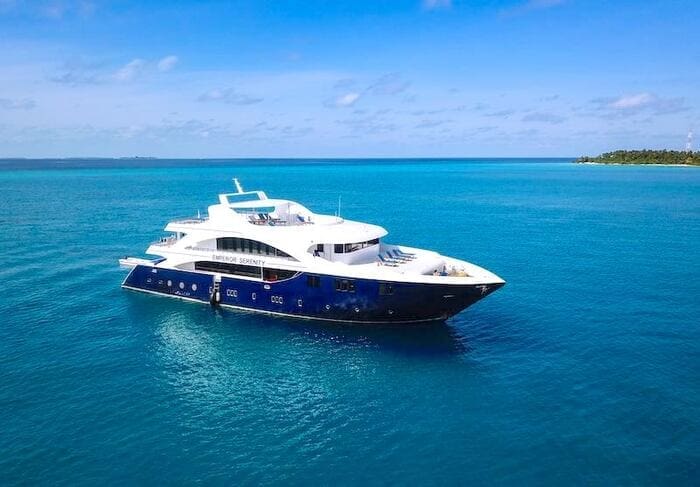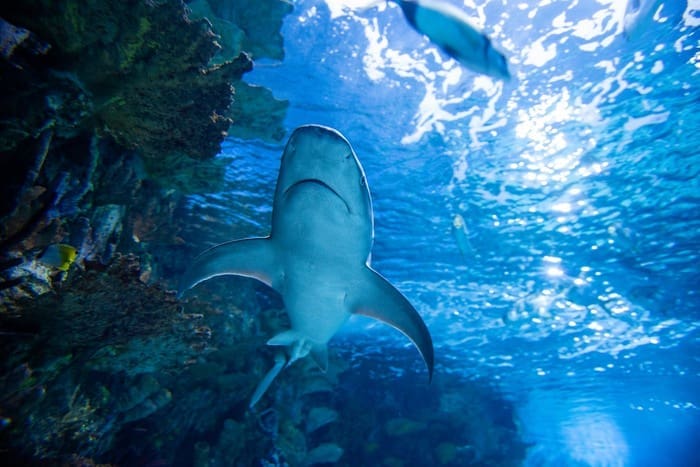If you’re a scuba diving enthusiast, you know that the best diving spots are often remote and inaccessible by day trips. Enter the world of scuba diving liveaboards—boats designed to take divers on multi-day trips to some of the most pristine underwater environments. From tropical coral reefs to pelagic wonders in the open ocean, liveaboards offer a unique opportunity to immerse yourself in your passion for diving.But with so many options out there, how do you choose the best liveaboard for your needs? Whether you’re a seasoned diver or a beginner looking to take the plunge, choosing the right liveaboard is crucial to maximizing your experience. In this guide, we’ll walk you through the key factors to consider when selecting the perfect scuba diving liveaboard.

1. Destination: Where Do You Want to Dive?
The first step in choosing a liveaboard is deciding where you want to dive. Different regions offer vastly different underwater experiences, so it’s important to choose a destination that matches your skill level and interests.Popular Liveaboard Destinations:
- The Maldives: Famous for its stunning coral reefs, abundant marine life, and clear waters.

- Thailand: Known for both beginner and advanced dive spots like the Similan Islands and Koh Tachai.

- The Red Sea (Egypt): Offers a rich mix of wrecks, reefs, and incredible visibility.

- The Galápagos Islands: A dream destination for divers looking to encounter large pelagics like hammerhead sharks and whale sharks.

- Indonesia: Raja Ampat and Komodo are among the world’s most biodiverse diving destinations.

- Australia: The Great Barrier Reef and Ningaloo Reef are world-renowned for diverse marine ecosystems.

Key tip: Before you book, make sure the destination is suitable for your diving level. Some places, like the Galápagos or Socorro, are best for advanced divers due to currents and deep dives.
2. Type of Liveaboard: Luxury vs. Budget
When it comes to liveaboards, the level of comfort can vary dramatically, from luxury yachts to budget-friendly boats. Consider what type of experience you’re looking for when deciding.
- Luxury Liveaboards: These offer high-end amenities such as private cabins, gourmet meals, spacious decks, and sometimes even hot tubs. If you’re looking for a more resort-like experience, this is the way to go.
- Budget Liveaboards: For those who are more concerned about diving than luxury, budget liveaboards offer a great way to experience top dive sites without breaking the bank. While these may be more basic in terms of amenities, they often provide excellent diving experiences.
Key tip: Luxury doesn’t always mean better diving. Some of the best dive trips can be on budget boats with experienced crews and knowledgeable dive guides.
3. Boat Size and Capacity: Small vs. Large Vessels
The size of the boat can impact the overall experience in terms of comfort, dive schedule, and group size.
- Small Boats (8-12 divers): Provide a more intimate experience. If you prefer small groups, personalized attention, and more flexible schedules, a smaller liveaboard might be ideal. Smaller boats can also access more remote or shallow dive sites.
- Large Boats (20+ divers): These can feel more social, making them great for meeting fellow divers. Larger liveaboards often have more amenities like entertainment rooms, multiple dive decks, and even onboard classes or workshops. However, keep in mind that bigger groups may feel crowded at dive sites.
Key tip: Think about how much social interaction you want versus personal space. Also, larger boats may have stricter dive schedules, while smaller ones can offer more flexible dive times.

4. Safety and Professionalism
When choosing a liveaboard, safety should be a top priority. Make sure to research the boat’s safety record, crew qualifications, and equipment maintenance.
- Check for certifications: Make sure the boat and crew have all the necessary certifications, such as PADI or SSI. Look for boats that offer emergency oxygen, first aid kits, and a dive guide to diver ratio of between 1:1 to 1:8 maximum.
- Emergency protocols: Ask about the boat’s emergency protocols, including evacuation procedures, the availability of a satellite phone, and onboard communication devices.
- Reputation of the dive operator: Read reviews and ask for recommendations from other divers. Reputable operators often have experienced crews who know the dive sites inside and out.
Key tip: A high-quality liveaboard will ensure that both the dive and safety briefings are comprehensive, giving you confidence that the crew is well-prepared for any situation.Would you like to become a PADI Scuba Diving Instructor and work on a Liveaboard? Then join our PADI IDC Course.
5. Dive Experience Offered
Different liveaboards offer different types of dives. It’s important to ensure the boat you choose matches your diving goals.
- Recreational Dives: Most liveaboards cater to recreational divers, offering dives at varied depths and locations. If you do not have a scuba certification yet, then check out the skills of the PADI Open Water Course information here.
- Technical Dives: If you’re looking for more advanced diving experiences like deep dives, wreck penetration, or nitrox diving, check that the liveaboard is equipped for these types of dives.
- Specialized Trips: Some liveaboards offer photography trips, manta ray encounters, or even shark expeditions. Research what the focus of the trip is before you book.
Key tip: Don’t hesitate to ask the operator about the type of marine life you can expect to see during your trip.

6. Timing: Best Time to Go
The time of year can greatly influence your diving experience. Different destinations have varying peak seasons for diving, depending on factors like water temperature, visibility, and the presence of specific marine life.
- High Season: Offers the best diving conditions but is often more expensive. Destinations like the Maldives and the Red Sea are most popular during their respective dry seasons.
- Shoulder or Off-Season: If you’re on a budget, consider traveling during the shoulder season when prices are lower but the diving is still good. However, off-season trips can come with unpredictable weather, so make sure you’re prepared.
Key tip: Research the local climate and marine life migration patterns. For example, if you’re hoping to see manta rays, whale sharks, or specific coral spawning events, plan your trip accordingly.
7. Trip Length: How Many Days Do You Want to Dive?
Liveaboards come in varying trip lengths, from 3-day mini-expeditions to 2-week-long journeys. Consider how much time you have and how long you want to dive.
- Short Trips (3-5 days): Perfect for a quick getaway, but may limit the number of dive sites visited.
- Extended Trips (7-10+ days): Allow you to dive deeper into the region, exploring more remote and pristine dive sites.
Key tip: If it’s your first liveaboard, a shorter trip may be more manageable, while longer trips are ideal for more experienced divers or those looking to explore vast regions like Indonesia or the Galápagos.

8. What’s Included: Hidden Costs to Watch Out For
Make sure to carefully read the fine print about what’s included in your liveaboard package. Some boats may appear cheap upfront but have hidden costs.
- Inclusions: Meals, snacks, diving gear, nitrox, airport transfers, and park fees can all vary by operator. Ensure you understand what’s included in your booking.
- Additional Fees: Many liveaboards charge extra for nitrox fills, gear rental, and dive courses. You’ll also want to consider tipping the crew, which is typically expected at the end of the trip.
Key tip: Avoid surprises by confirming all potential costs ahead of time.
Frequently Asked Questions About Choosing the Best Scuba Diving Liveaboard
What is a scuba diving liveaboard?
A scuba diving liveaboard is a vessel designed to accommodate divers for extended trips, allowing them to live aboard while accessing remote and pristine dive sites. These trips often span several days, providing multiple dives per day and the opportunity to explore diverse underwater environments.
Why choose a liveaboard over land-based diving options?
Liveaboards offer several advantages:
- Access to remote dive sites that are unreachable by day boats.
- Increased number of dives per day, often including night dives.
- Enhanced camaraderie with fellow divers in an immersive environment.
- Convenience of having accommodations, meals, and diving operations in one place.
What factors should I consider when selecting a liveaboard?
Key considerations include:
- Destination: Choose based on desired marine life, water conditions, and personal travel preferences.
- Budget: Liveaboards range from budget-friendly to luxury options; select one that fits your financial plan.
- Dive Experience Level: Ensure the itinerary matches your certification and comfort level.
- Amenities: Consider cabin types, onboard facilities, and meal offerings.
- Group Size: Smaller groups may offer a more personalized experience.
How do I prepare for a liveaboard trip?
Preparation tips:
- Certification: Ensure your diving certification meets the trip requirements.
- Medical Clearance: Obtain a recent diving medical if necessary.
- Packing: Bring essential dive gear, appropriate clothing, and personal items.
- Travel Insurance: Consider coverage that includes diving activities.
- Nitrox Certification: Some trips offer Nitrox; certification can extend bottom times.
Are there liveaboard options suitable for beginners?
Yes, many liveaboards cater to beginners, offering:scubadivingtips.net
- Shallower dive sites with mild currents.
- Onboard instructors for additional guidance.
- Courses to advance your diving skills during the trip.
What are some top liveaboard destinations?
Popular liveaboard destinations include:
- Raja Ampat, Indonesia: Known for its biodiversity and vibrant coral reefs.
- Red Sea, Egypt: Famous for wreck dives and clear waters.
- Galápagos Islands, Ecuador: Offers encounters with unique marine life.
- Maldives: Features atolls with abundant pelagic species.
- Great Barrier Reef, Australia: Home to expansive coral systems.
Conclusion: Ready to Dive In?
Choosing the right scuba diving liveaboard is all about balancing your needs with what the boat and destination have to offer. Whether you prioritize luxury, are focused on a specific marine encounter, or want a budget-friendly option, thorough research will ensure you select the best liveaboard for your adventure.By considering factors like your desired destination, the boat type, safety protocols, and the time of year, you’ll be on your way to an unforgettable underwater journey.
Now that you know how to choose the best scuba diving liveaboard, it’s time to plan your next diving adventure! Start by exploring liveaboard options in your dream destination and get ready for the trip of a lifetime.


Leave a Reply